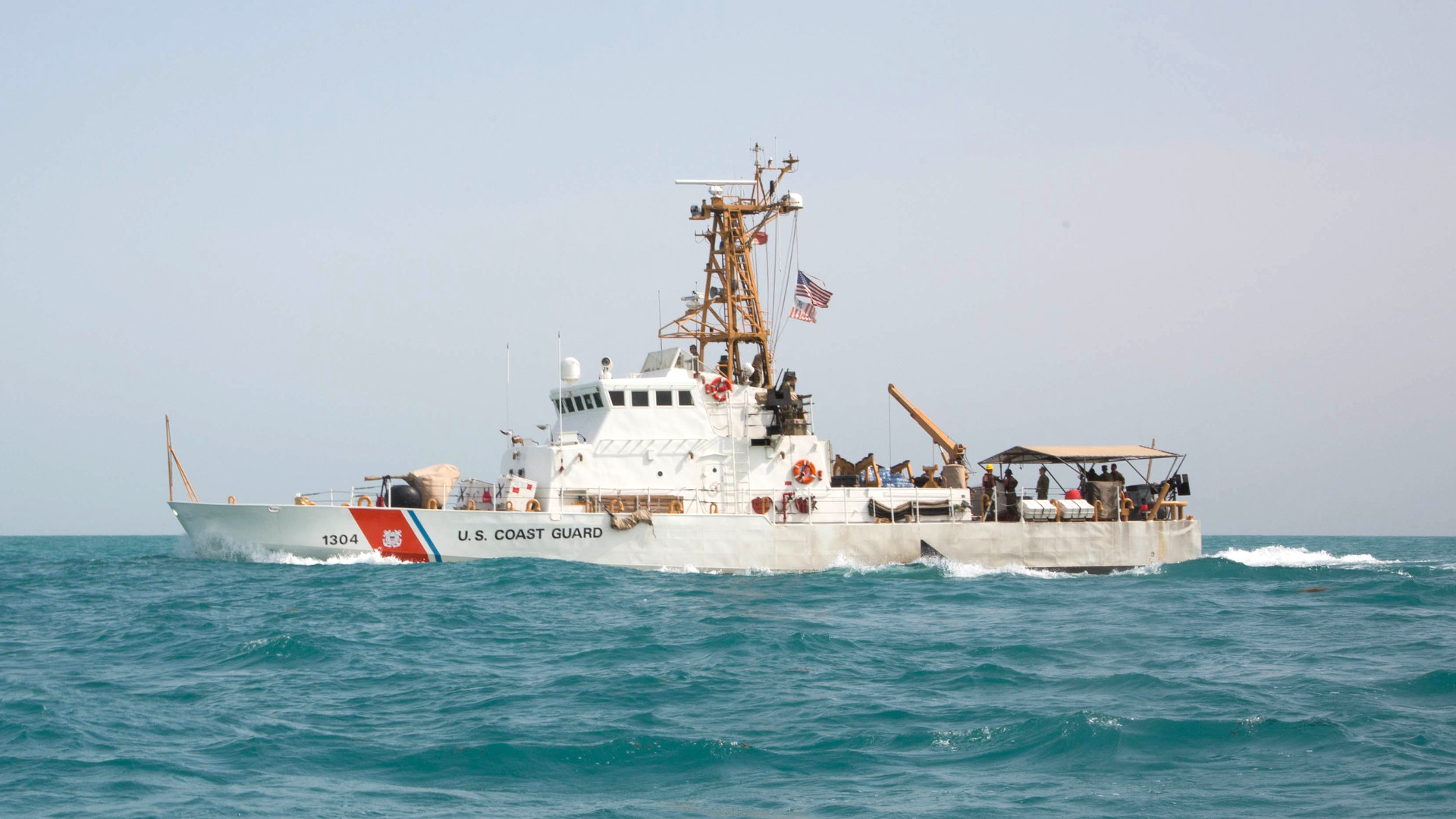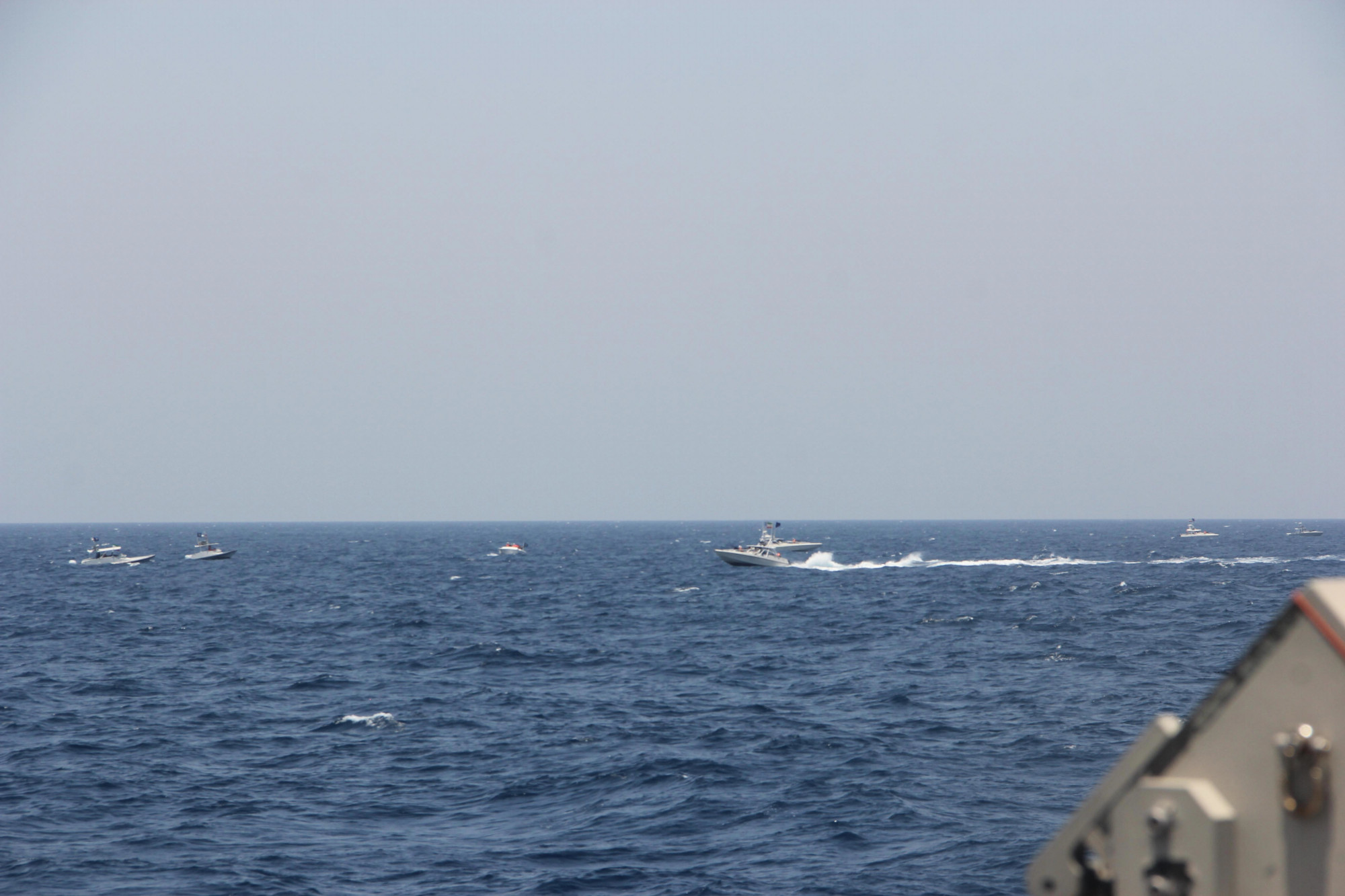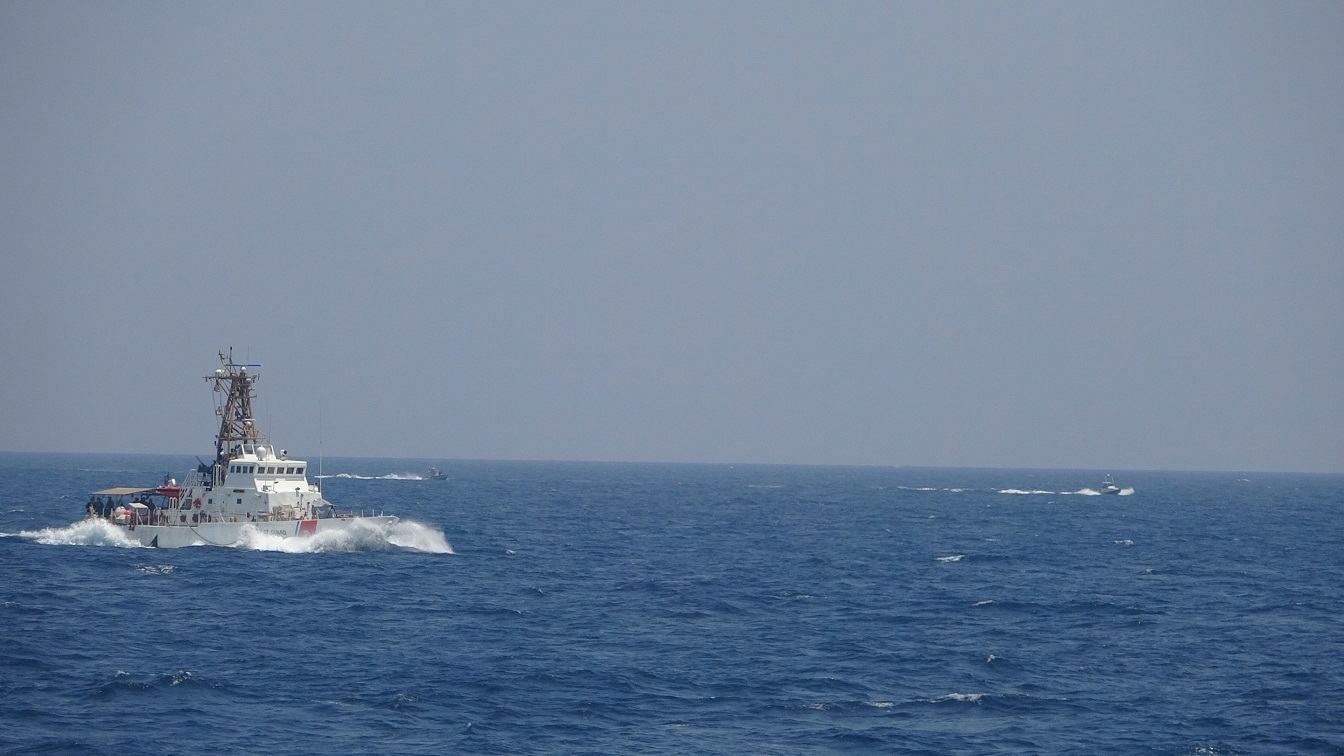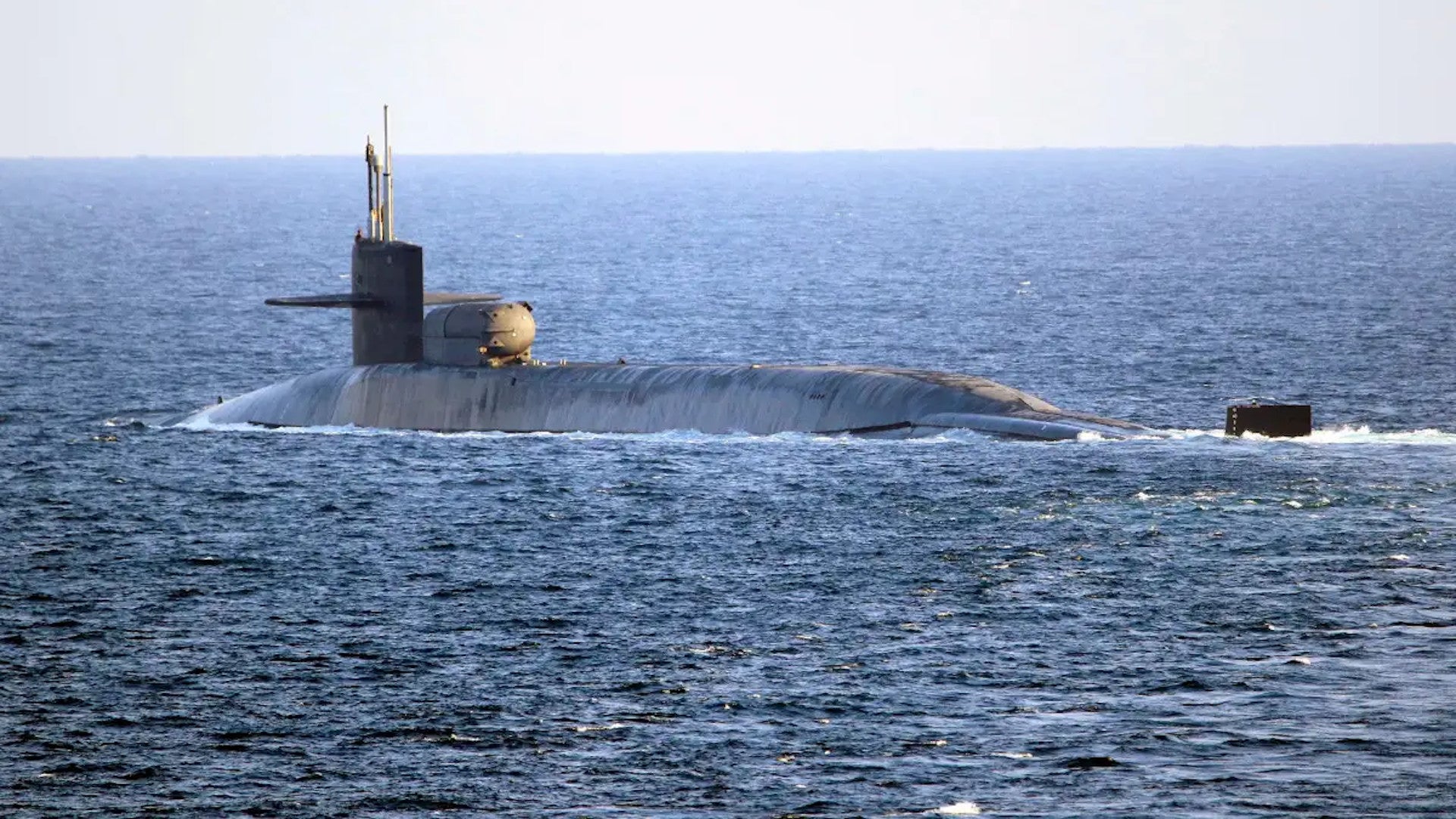A U.S. Coast Guard patrol boat fired warning shots earlier today at a swarm of Iranian boats that got worryingly close to a group of American naval vessels escorting the U.S. Navy’s Ohio class guided-missile submarine USS Georgia through the volatile Strait of Hormuz. This is the third incident of Iranian boats harassing U.S. warships in the Persian Gulf region in a little over a month and the second time in two weeks that American forces have responded with warning shots.
Top Pentagon spokesperson John Kirby said that this latest incident involved a total of seven U.S. ships, including Georgia. The Island class patrol boat USCGC Maui was also involved and was the vessel that fired a total of 30 warning shots from a .50 caliber machine gun, in two bursts, at 13 boats belonging to Iran’s Islamic Revolutionary Guard Corps (IRGC).

Kirby said that the Iranian boats had “conducted unsafe and unprofessional maneuvers,” but left the area after the second burst of .50 caliber rounds. Maui‘s crew had fired one burst when some of the IRGC boats came within 300 yards of the American naval formation and another when they closed to within 150 yards.
The Navy’s Cyclone class patrol craft USS Firebolt
had also fired warning shots, as seen in the video below, to chase away a group of IRGC boats that got close to American warships in the Persian Gulf on April 26. That followed an incident earlier in April in which IRGC boats, including a one-of-its-kind catamaran type, harassed U.S. naval vessels in the region.

This latest harassment comes just days after the Navy, together with the Coast Guard, seized a massive cache of weapons, including small arms and anti-tank guided missiles, believed to be on their way to Iranian-backed Houthi rebels in Yemen, in the northern end of the Arabian Sea.
It’s not clear which direction Georgia and her escorts were sailing in the Strait of Hormuz, which links the Persian Gulf to the Gulf of Oman, during the incident today. The U.S. Navy made the highly unusual decision to actively highlight its arrival in the Persian Gulf in December 2020. The service said this was was the first time one of the four Ohio class guided missile submarines, or SSGNs, conversions of Ohio class ballistic missile submarines, or SSBNs, had entered this body of water in eight years.

That deployment was clearly a message to Tehran, coming at a time of extremely high tensions between the U.S. and Iranian governments ahead of the first anniversary of the U.S. military’s killing of IRGC General Qassem Soleimani. In January, Iranian authorities released a video reportedly shot from a Sea King helicopter that appeared to show Georgia sailing at periscope depth, effectively announcing its presence, near where Iran’s military was conducting a major exercise.
The Ohio class SSGNs are some of the Navy’s most in-demand submarines, best known for their ability to carry a massive load of up to 154 Tomahawk cruise missiles. Beyond that, however, they are really extremely capable multi-mission platforms able to deploy special operations forces, as well as aerial drones and unmanned underwater vehicles, all while serving as discreet underwater command and control and intelligence fusion centers. You can read more about them in detail in this past War Zone feature.
However, on the surface, submarines, especially large types, such as the Ohio SSGNs, are very vulnerable. They have limited force protection capabilities themselves and do not have the maneuverability of surface ships.
With this in mind, the swarming of Georgia in the Strait of Hormuz underscores the inherent risks of that transit, in either direction, to U.S. and other foreign warships, as well as commercial vessels. Iran routinely threatens to blockade this strategic chokepoint, through which the majority of the world’s oil exports, among other goods, flow.
This incident also comes as U.S. President Joe Biden is seeking rapprochement with Iran, including indirect negotiations regarding the U.S. government’s return to a controversial multi-national deal regarding Tehran’s nuclear ambitions, after years of hard-line policies on President Donald Trump. Beyond Iran’s continued hostile activities, Biden is facing various hurdles, including domestic political pressure and foreign criticism, especially from officials in Israel, as he pursues those diplomatic objectives.
We will continue to update this story as more information becomes available.
UPDATE, 4:15 PM EST:
Fox News has also now reported that the USS Georgia was entering the Persian Gulf from the Gulf of Oman by the way of the Strait of Hormuz during the incident.
UPDATE, 4:40 PM EST:
The U.S. Navy has now released the following two pictures from the incident, along with additional information. The official press release says that the group of U.S. warships included the Navy’s Ticonderoga class cruiser USS Monterey, as well as three Cyclone class patrol craft – the USS Hurricane, USS Squall, and USS Thunderbolt – along with another Coast Guard Island class patrol boat, the USCGC Wrangell.


“The U.S. naval vessels were exercising transit passage in the Strait of Hormuz in accordance with customary international law,” the Navy said in a press release. “The U.S. naval vessels were escorting Georgia, as the submarine was transiting on the surface.”
“Two of the 13 IRGCN [IRGC Navy] vessels broke away from the larger group, transited to the opposite side of the U.S. formation and approached Maui and Squall from behind at a high rate of speed (in excess of 32 knots) with their weapons uncovered and manned,” the release continued. “The remaining 11 FIAC [fast in-shore attack craft] maintained position which places the formation of the U.S. ships in between the two IRGCN groups.”
The Navy says that U.S. personnel “issued multiple warning[s] to both groups of IRCGN vessels.” This included USCGC Maui and USS Squall issuing, together, “repeated bridge-to-bridge verbal warnings, five acoustic device warnings, and five short blasts of the ship’s horn, the internationally recognized danger signal outlined in the International Regulations for Preventing Collisions at Sea (COLREGs).”
The press release further confirms two rounds of warning shots when the craft came within 300 and 150 yards, respectively. “After U.S. naval ships repeated verbal and acoustic warning, sounded five blasts of the ship’s horn, and fired warning shots, the two FIAC altered course and increased their distance from the U.S. forces,” the press release added.
“During the interaction, the IRGCN vessels came within 150 yards of Maui at high speed, an unnecessarily close range that put the ships and their crews in immediate danger,” according to the Navy. The two IRGCN vessels maneuvered in an unsafe and unprofessional manner and failed to exercise due regard for the safety of U.S. forces as required under international law. Their actions when coupled with the actions of the larger group of FIAC increased the risk of miscalculation and collision and were not in accordance with the internationally recognized COLREGS’ ‘rules of the road’ or internationally recognized maritime customs.”
“The U.S. crews operated with distinct professionalism and superior seamanship,” the service added. “Our Navy will continue to fly, sail and operate anywhere international law allows while promoting the rules-based international order throughout the region.”
UPDATE, 5:30 PM EST:
The Navy has now released the following video footage from the incident.

UPDATE, 5/11/2021:
Iran has, unsurprisingly, rejected the U.S. military’s version of events and has released its own video footage from the incident purporting to show IRGC vessels on a “routine patrol” near USS Georgia and its escorts.
In a statement, the IRGC accused the U.S. government of pushing “false narratives and unprofessional behavior” and said it should “abide by international regulations.” The organization also called on American warships to cease “provocative and aimless shooting” in response to the firing of warning shots.
“Sadly, harassment by the IRGC Navy is not a new phenomenon. It is something that all of our commanding officers and the crews of our vessels are trained to for,” top Pentagon spokesperson John Kirby had also said during a press conference on May 10. “This activity is the kind of activity that could lead to somebody getting hurt and could lead to a real miscalculation there in the region, and that doesn’t serve anybody’s interests.”
Contact the author: joe@thedrive.com
